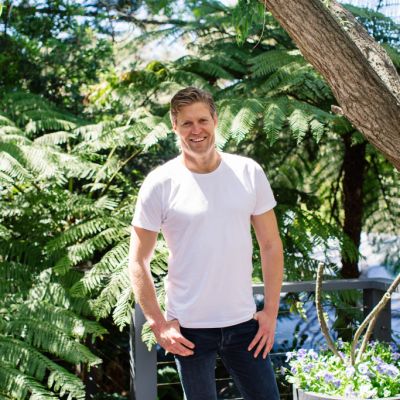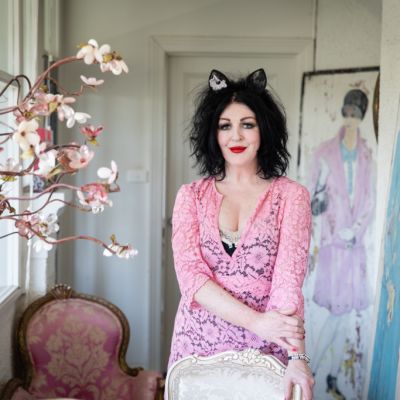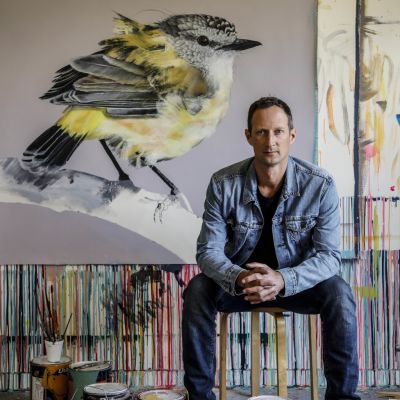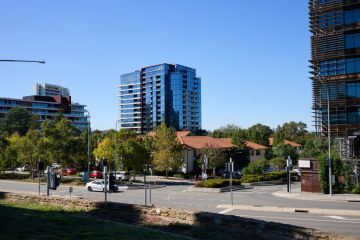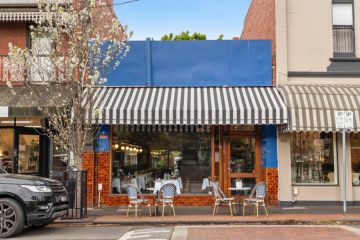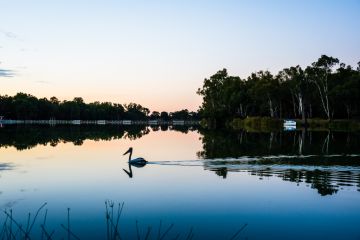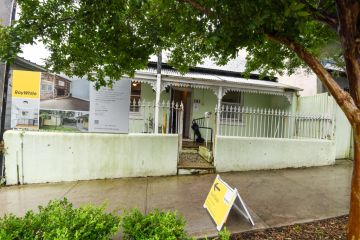Personal Space: At home with artist Geoffrey Carran
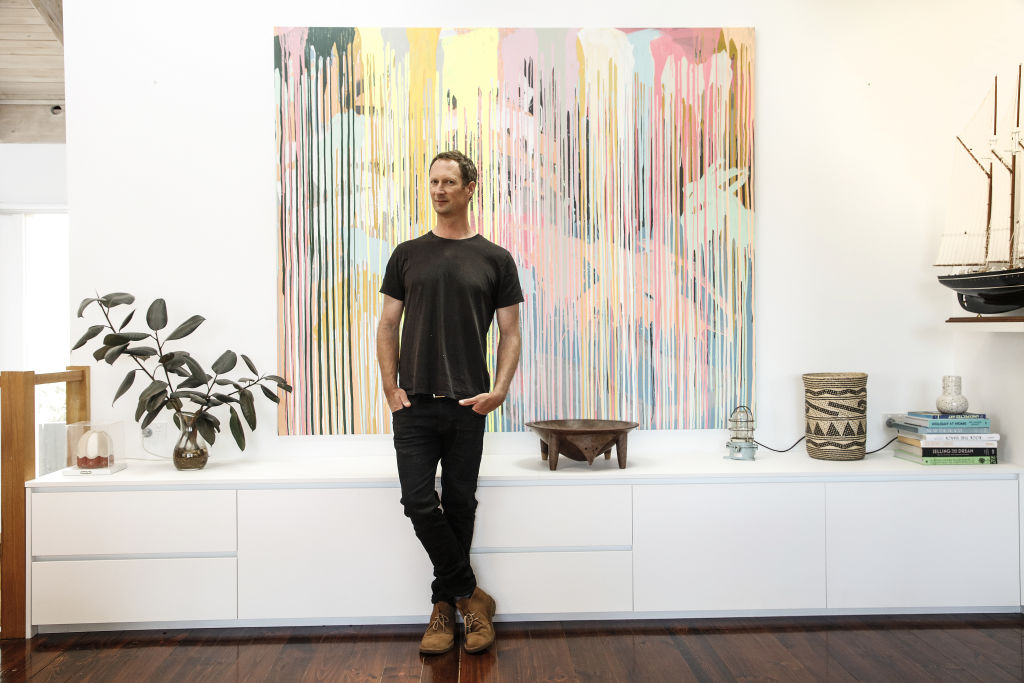
A sea change in 2013 inspired New Zealand-born artist Geoffrey Carran to call Jan Juc home. He lives in the Surf Coast town with his wife Rowena Martrinich, an abstract painter, and their two-year-old son Finley.
Best known for his bright paintings of birds, Carran fell in love with Australian wildlife when he first visited as a child in 1988. He returned years later to study at RMIT and has since become renowned for his contemporary art.
He has also just completed his largest outdoor and permanent commission to date – the Goroke silo art project in the western Wimmera region of Victoria.
Carran’s two-storey weatherboard 1980s home has been extensively renovated, with a new build downstairs that comes with artist studios and a bedroom.
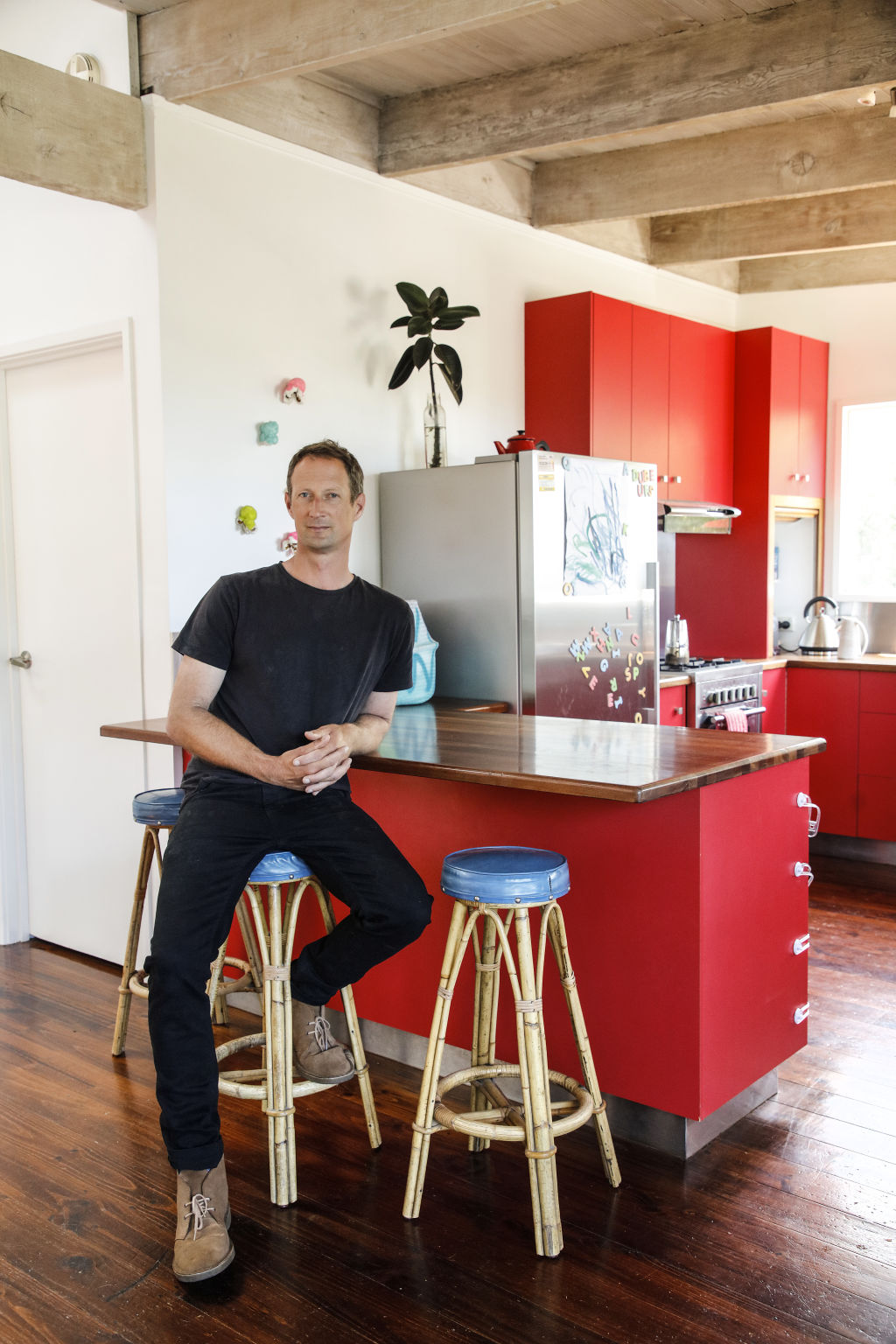
Upstairs is a breezy, open-plan living area – think white-washed timbers, neon-bright artwork, and a mix of antiques and modern pieces. A nautical theme is also prevalent.
There’s furniture by Jardan and Coco Republic, and plenty of handmade pieces by artist friends. Textiles feature prominently, as well.
“The house needed a lot of attention when we first bought it, but we instantly feel in love,” Carran says of the 2012 purchase.
“The home gave us the opportunity to move down the coast and leave Melbourne.
“We found we could do what we do as artists from home and became more productive because we didn’t have to keep driving here to enjoy more coastal time.
“We both surf, so it made perfect sense.”
Some of Geoffrey’s favourite things …
Jug
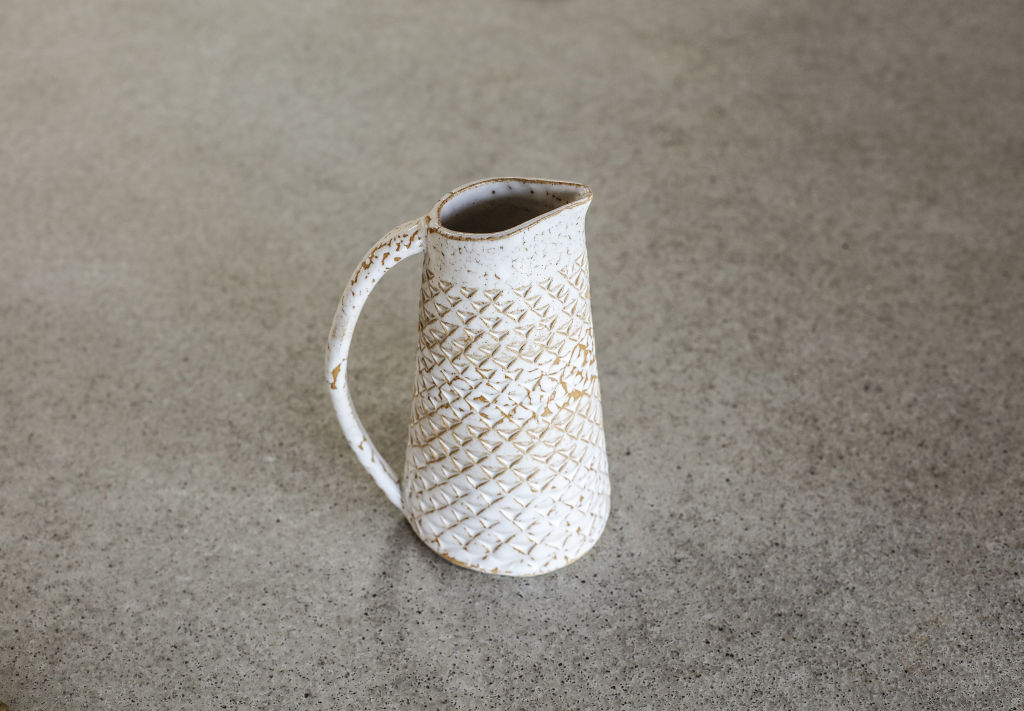
This jug was made by my dad Andrew Carran, a ceramicist based in Christchurch, New Zealand. He makes his own glazes by using different soil profiles and minerals he finds on his travels around the South Island. He is an agronomist by trade, and applies his deep understanding of soil and chemistry to ceramics.
Artwork by wife Rowena Martrinich
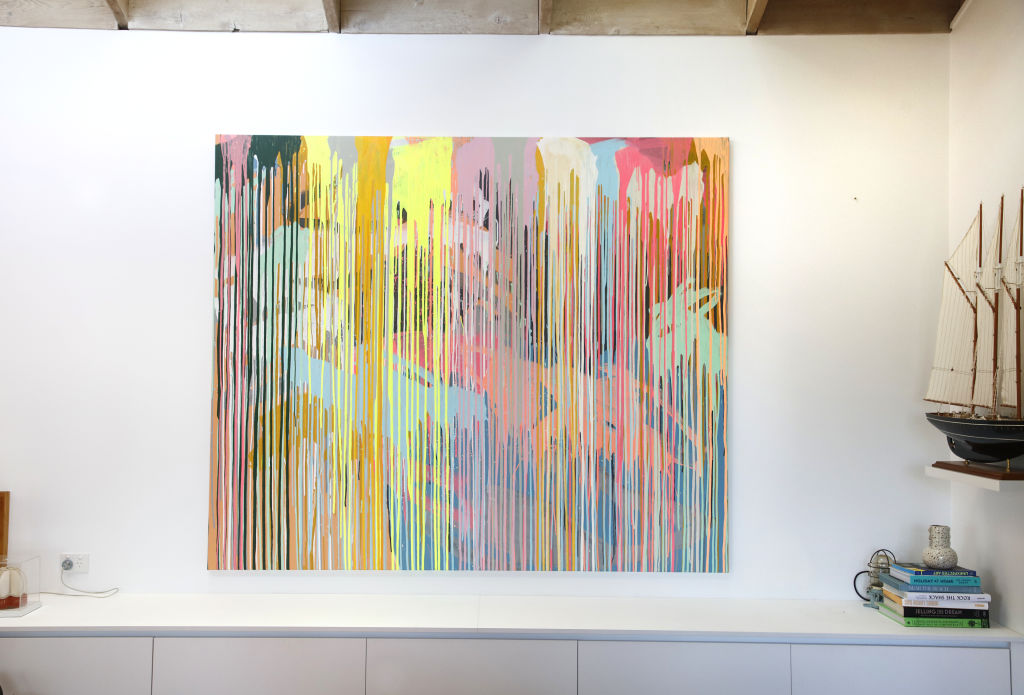
This is the first artwork painted by Rowena when we moved into our Jan Juc home. I love her choice of colour and her fearless use of it. We have an open-plan living, kitchen and dining area and rotate a lot of our artwork – this one is there.
Featherston chair
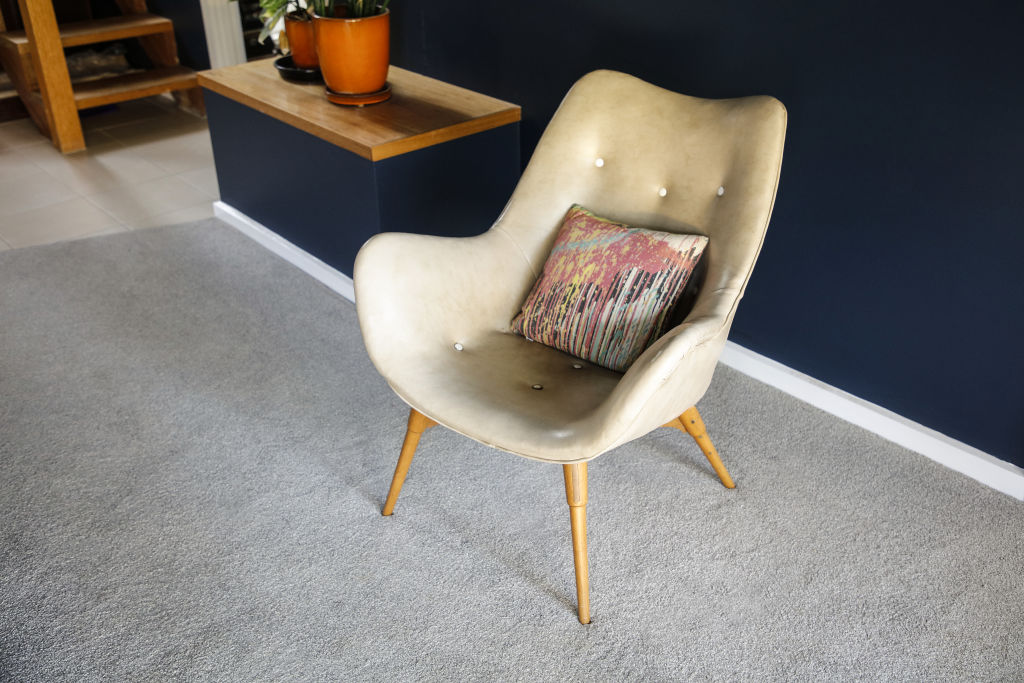
This Featherston B210 chair is a fine example of Australian mid-century modernist design – it is well constructed, stylish and very comfortable. It was first purchased by my wife Rowena’s side of the family and now we are proudly looking after it.
‘Junk shop’ ship
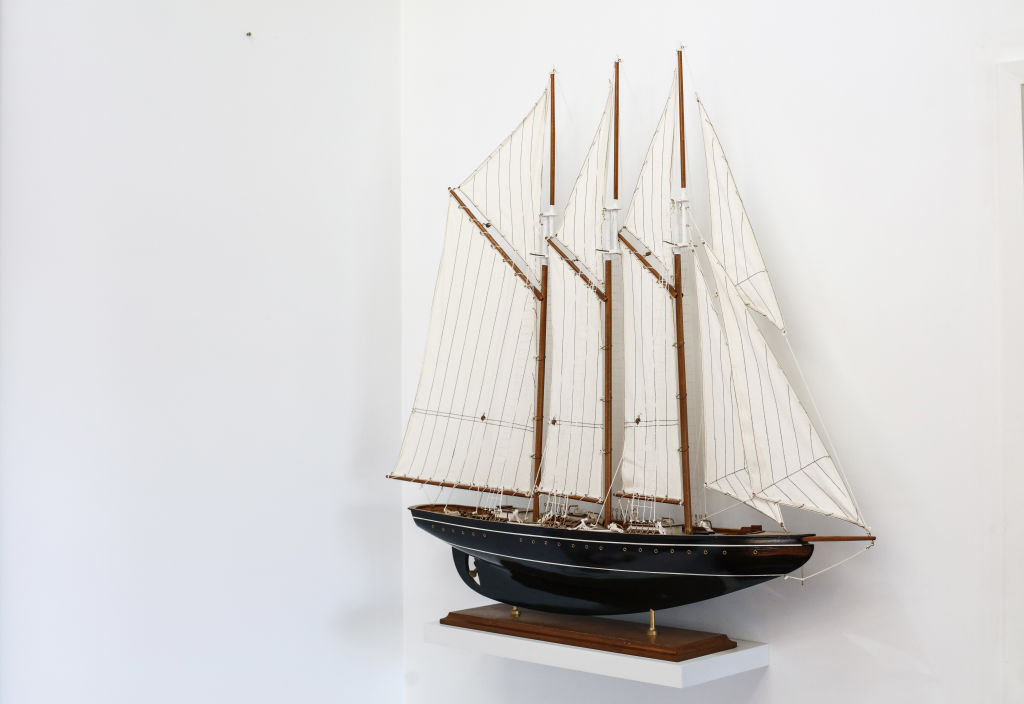
Our son, Finley, was born two years ago and this ship marks that occasion when our family changed from two to three. Rowena found it at a junk shop while taking her first walk after the birth. We both love nautical things, and love the aesthetic. I also saw this in the same junk shop and was attracted to it.
Surfboard
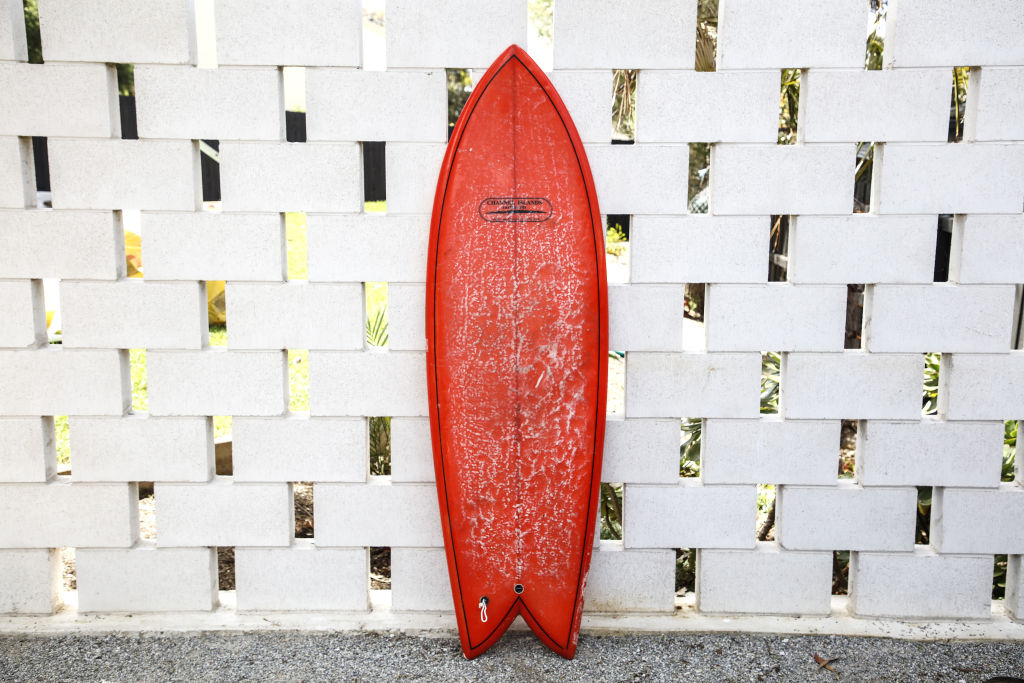
I love surfing; it was one of the main attractions of moving to Australia. I have had this for a long time and it’s a favourite – made by Channel Island and shaped by American Al Merrick. It’s like riding a magic carpet.
Ceramic bowl
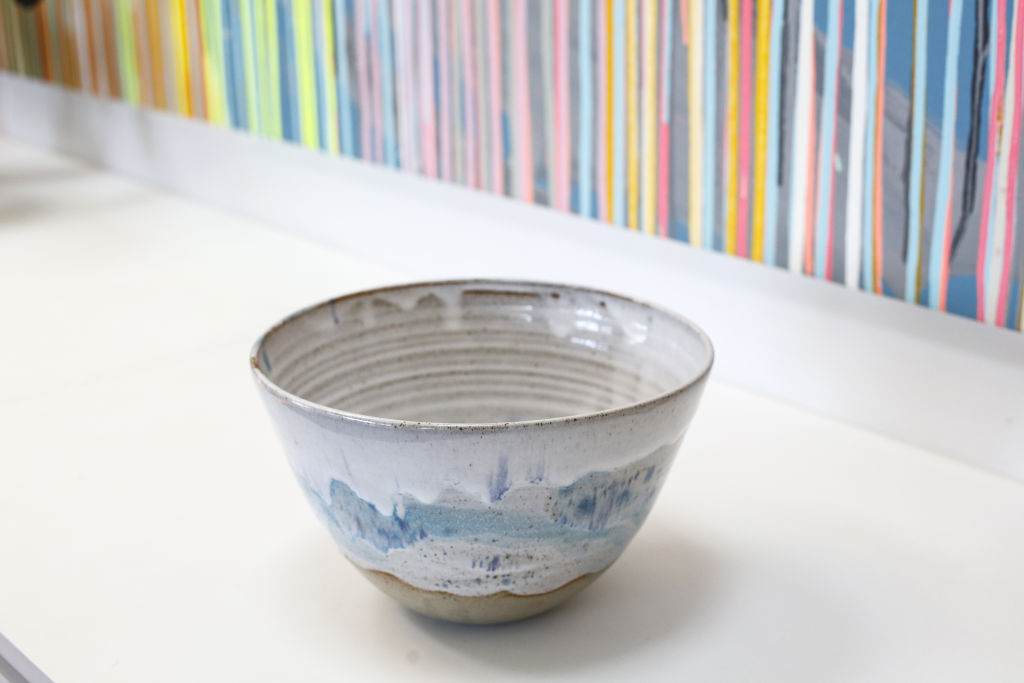
This is a 40th birthday gift from my friend Chela Edmunds who runs her own ceramic label Takeawei. It has those beautiful aqua and coastal colours I really connect with. The object celebrates a moment in time. I love her application of glazing, the fact it is made by hand – it is very special to me.
Rug

The handmade kilim rug was purchased from Loom Rugs. We had been looking everywhere to find a rug for our home and are big fans of textiles. Rowena and I loved the colours; they’re so unique and have a specific tribal symbolism and colour palette that suited our home. I love the history and handmade craft aspect, too.
We thought you might like
States
Capital Cities
Capital Cities - Rentals
Popular Areas
Allhomes
More
